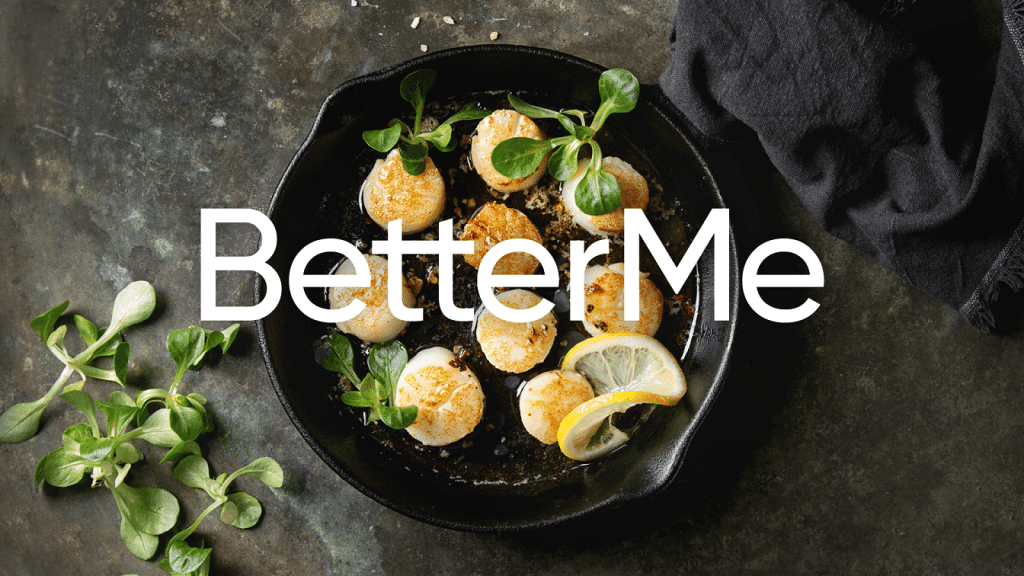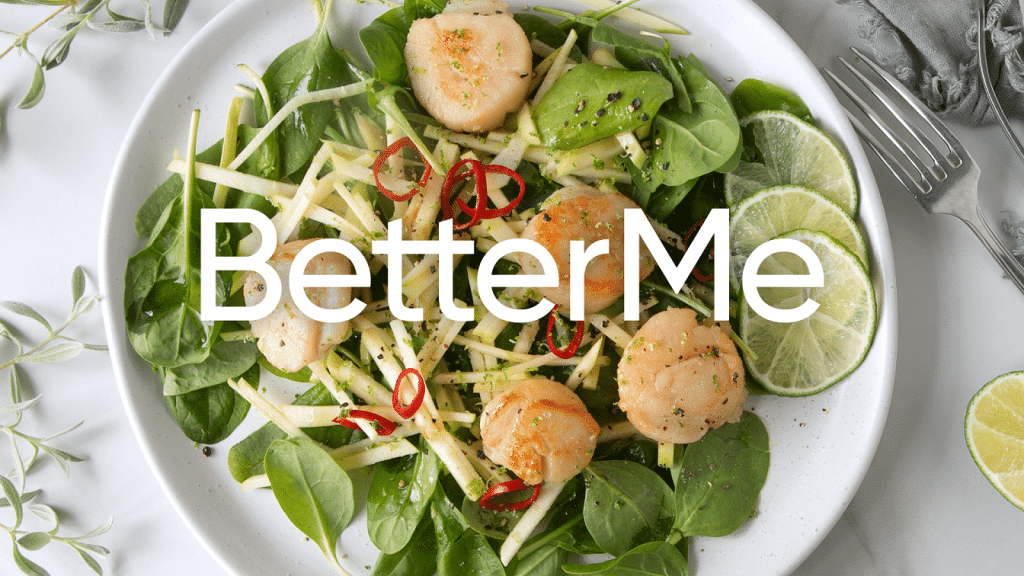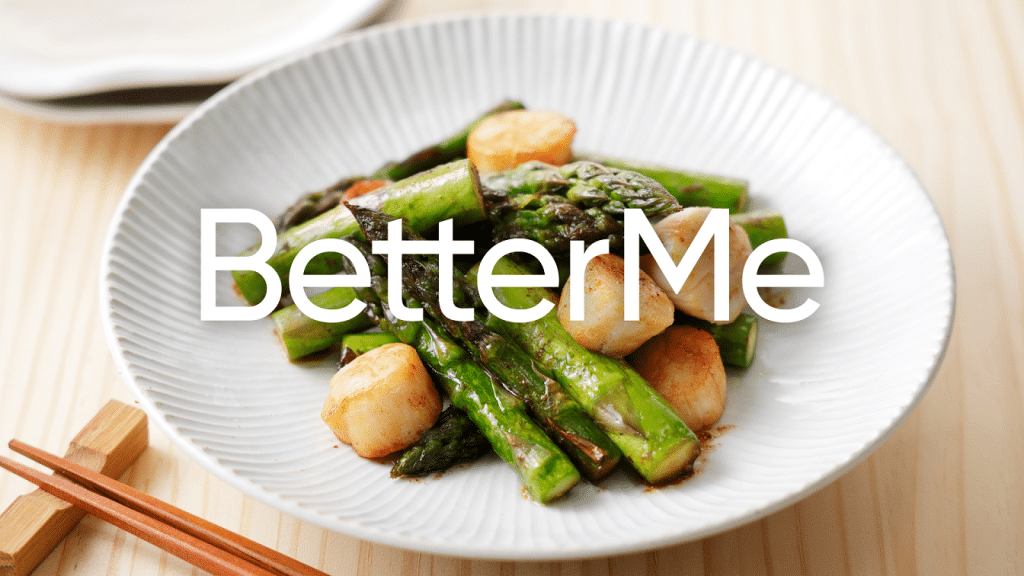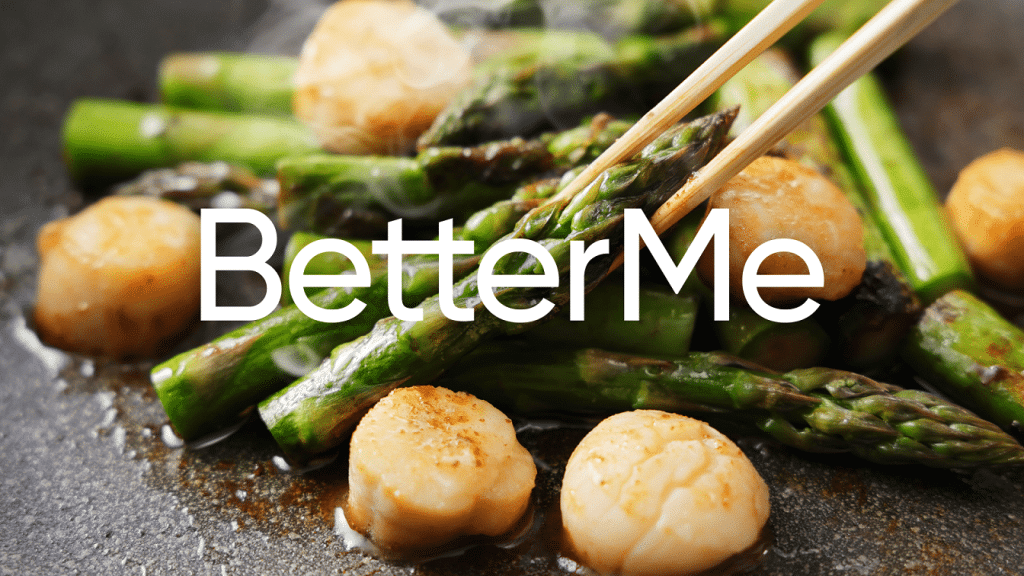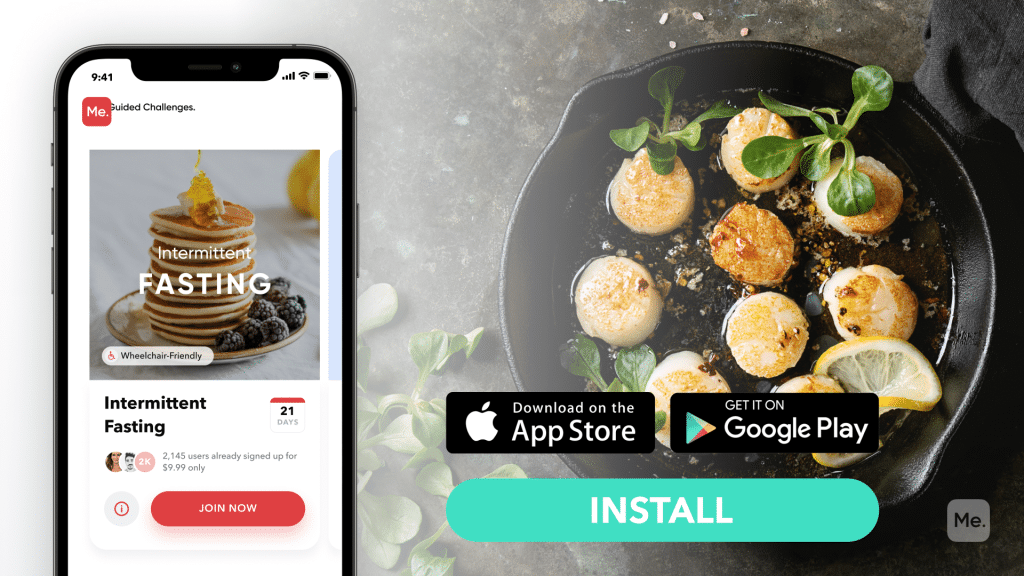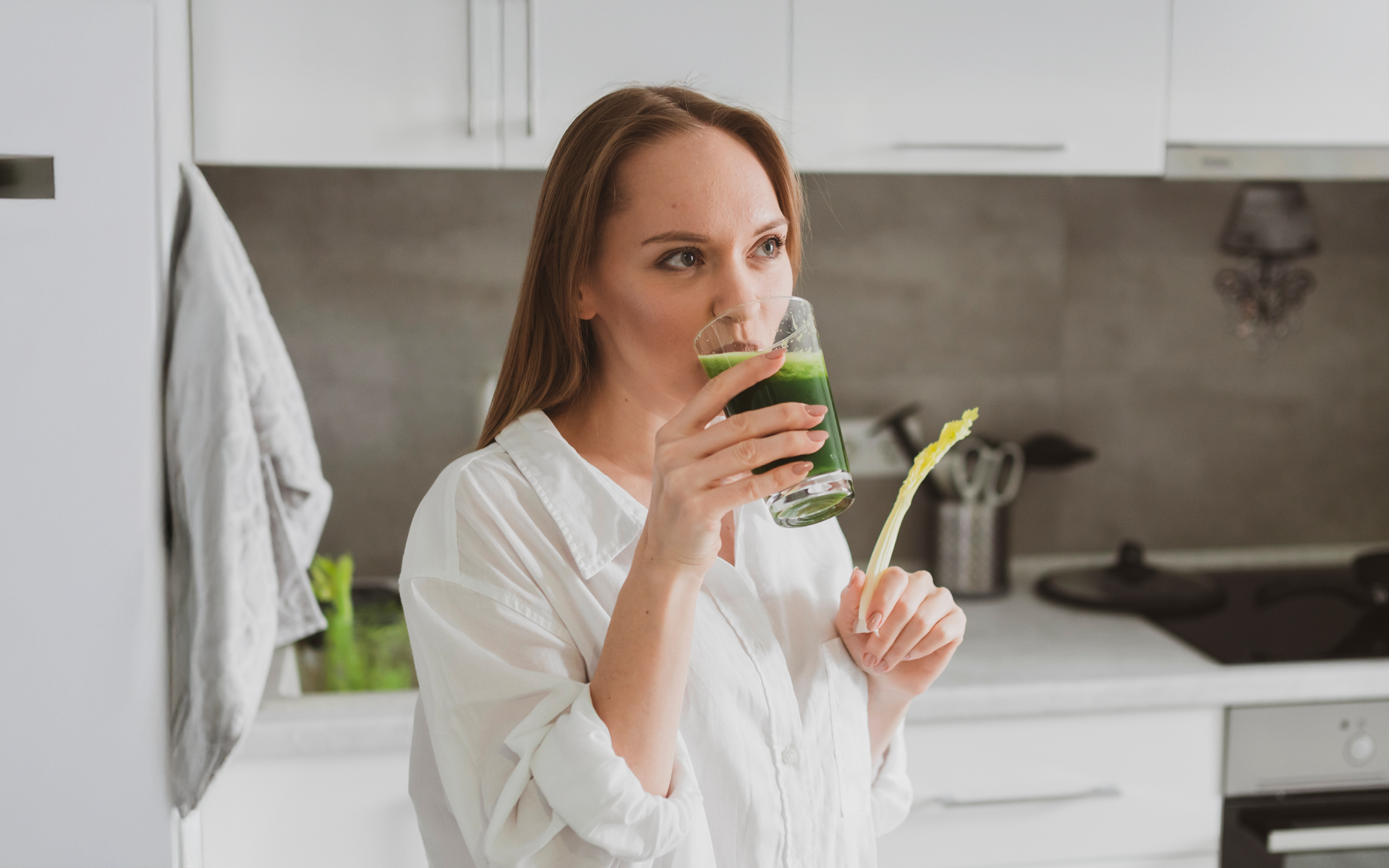Scallops are a type of mollusk that comes in different sizes. They are usually white or pink but can be brown, orange, red, purple, or blue as well. Scallops have an excellent nutritional profile and offer many health benefits according to experts. However, they also have some side effects and should not be eaten raw because of the risk of contamination with bacteria which could lead to food poisoning. In this article, we will look at the nutritional value of scallops, their health benefits, side effects, and some meal ideas that you could use that include this type of shellfish.
Scallops Nutrition Facts
According to the USDA, three ounces (85 grams) of steamed scallops contain (8):
- Calories: 94
- Carbs: 0 grams
- Fat: 1 grams
- Protein: 17 grams
- Omega-3 fatty acids (EPA and DHA): 150 mg
- Vitamin B12: 76% of the recommended daily value (DV)
- Iron: 3% of the DV
- Magnesium: 7% of the DV
- Phosphorous: 29% of the DV
- Potassium: 6% of the DV
- Zinc: 12% of the DV
- Copper: 3% of the DV
- Selenium: 33% of the DV
Health Benefits Of Fresh Scallops
Scallops are one of the healthiest foods you can eat according to some experts. They provide many essential vitamins and minerals, as well as other important nutrients that your body needs for optimum function.
Some of the main health benefits that scallops offer include:
May Aid In Weight Loss
The high protein content in scallops helps increase satiety and reduce appetite (17). This makes them ideal for people who are trying to lose weight.
Won’t Raise Cholesterol
Scallops contain cholesterol but they won’t raise your blood cholesterol in the way that you would expect. The American Heart Association recommends eating fish and shellfish, including scallops, at least twice every week because they offer many health benefits with little risk of raising cholesterol levels (4).
Read More: Seafood Diet To Turbocharge Your Weight Loss Without Skipping On Flavor
Heart Health
Scallops are rich in potassium and magnesium, both of which help manage blood pressure and protect the heart from disease (7). They also contain omega 3 fatty acids which helps to keep cholesterol under control and reduce inflammation of the arteries and tissue damage to arterial walls (11). By reducing inflammation and preventing cardiovascular diseases, scallops are an excellent food for the heart.
Lower Osteoporosis Risk
Scallops are high in several minerals that promote strong bones and lower the risk of osteoporosis according to experts. These include calcium, phosphorus, magnesium, potassium, and zinc (13).
Improved Vision Health
Scallops contain vitamin A and omega 3 fatty acids, which are important for eye health because they protect against cataracts and macular degeneration (10).
Higher Energy Levels
Scallops are exceptionally high in B vitamins that help create energy from the food you eat while also supporting nervous system functions so your body can produce neurotransmitters to stimulate nerve impulses throughout the body (22).
Healthy Hair
Scallops are rich in protein, iron, and vitamin B12. Healthy hair is often the result of a diet that is sufficient in all these minerals and vitamins according to experts.
Rich In Antioxidants
Scallops contain several antioxidants that help protect against free radicals associated with aging, cardiovascular disease, cancer risk, and macular degeneration. They also help reduce inflammation and protect cardiovascular and nervous system functions (6).
May Prevent Stroke
Scallops are rich in omega 3 fatty acids which may help reduce the risk of stroke, according to experts. They also contain other minerals that protect against cardiovascular disease and promote blood flow through the body (12).
Improve Immunity
Shellfish are high in various vitamins and minerals which support a healthy functioning immune system (21).
Lower Risk Of Macular Degeneration
The selenium in scallops works with vitamin E to protect against age-related macular degeneration (9). This type of vision loss is often associated with aging and can be a major cause of blindness in the elderly.
Whether you’re a workout beast or just a beginner making your first foray into the world of fitness and dieting – BetterMe has a lot to offer to both newbies and experts! Install the app and experience the versatility first-hand!
Aid Post-Workout Recovery
Scallops are a good source of protein and amino acids, both of which help promote muscle recovery after exercise. They also contain several important minerals that improve the function of muscles, including magnesium and potassium (16).
Prevent Anemia
Shellfish contain iron which is essential for creating red blood cells to prevent anemia (5). The vitamin B12 they contain is also essential for producing red blood cells.
Delicious Taste And Texture
Scallops have a wonderful texture and rich, sweet taste that stands out from other types of seafood. They also have a variety of uses from being eaten raw to being boiled or grilled. With so many ways to enjoy them, scallops are an excellent addition to any meal.
Side Effects And Precautions Of Scallops
Scallops are a healthy food when eaten in moderation but there are some things you should know about them before consuming them regularly. Here is a list of the side effects and precautions to take:
Allergies
People who are allergic to other types of seafood may also be allergic to scallops so it is important to know if you have any allergies before eating this type of shellfish (14). If you think you might be sensitive to it, talk to your doctor about how you can identify the symptoms and treat any allergies.
Mercury Content
All seafood may be contaminated with mercury, although scallops tend to have lower levels than other types of seafood. The FDA recommends that pregnant women, nursing mothers, and young children try to consume seafood that is lower in mercury content as high levels of mercury may damage developing nervous systems (1).
Bivalves like scallops can also contain other heavy metals such as lead and cadmium, all of which can cause problems if they build up in your system over time. Removing the kidney and digestive gland of the scallops during processing can remove most of the cadmium before human consumption.
Purine Content
Scallops are also high in purines, which is another reason they should be eaten in moderation by people who need to limit their purine intake (15). If you have gout or are prone to uric acid kidney stones then it is best to limit your consumption of scallops to prevent the formation of uric acid crystals.
Possible Food Poisoning
Scallops are prone to contamination with vibrio bacteria, also known as food poisoning (20). This often occurs when they are caught or harvested from waters that contain that bacteria so it is important to buy them from reputable suppliers and store them properly before cooking. It is also vital to cook scallops thoroughly to kill any bacteria before eating.
Read More: Is Salmon Good For Weight Loss? Debunking The Myths And Setting The Record Straight
Scallops Storage And Food Safety
Scallops are best stored in a refrigerator within two hours of being caught to ensure freshness. They can be kept overnight but should not be left for more than two days because they start to decay after that time. Cooked scallops can be frozen for up to three months if you wish to keep them longer.
Scallops are highly perishable so it is important to keep them refrigerated at all times. They should be cooked within two days of being bought if they are fresh and the packaging has not been damaged. Scallops should also be kept away from raw foods including other types of shellfish because this increases the risk of contamination.
How To Eat Scallops
Scallops are an excellent food to include in your diet. Here is how to prepare and eat scallops if you do not know:
Shucked Scallops
First, shuck the live scallop by inserting a knife near the hinge of the shell. Once you have found the natural opening, put your fingers on either side of the shell and pull it apart. Discard the top shell and slide your knife under the scallop from the bottom shell to detach it from the muscle, then rinse off any attached debris with water.
Raw Scallops
If you want to eat them raw, keep them fresh in a container of ice or cover them with a damp cloth until you are ready to use them. Scallops also do not need to be shucked before eating this way.
Boiled Or Steamed Scallops
Pour one and a half inches of water into a pot, add salt if desired, and bring it to a boil over high heat. Place the scallops in the pot and reduce the heat to medium. Cook until the scallops turn opaque and firm up, which should take about five minutes by steaming.
Pan-Fried Scallops
Dredge the scallops in flour before placing them in a hot skillet over medium heat with butter or oil added to prevent sticking. Leave them undisturbed for three to four minutes and then flip them over and cook for three to four more minutes.
Broiled Scallops
Place the scallops on a wire rack that has been placed in a baking sheet and then place it under the broiler in your oven. Broil until they turn opaque and begin browning, which should take about five minutes.
Grilled Scallops
Dredge the scallops in flour before placing them on a hot grill over direct heat. Leave them undisturbed for two to four minutes and then turn them over and cook for two to four more minutes.
Dropping pounds by the dozens without putting yourself through the wringer is everyone’s weight loss pipe dream. But what if we told you that the BetterMe app can make that happen? Keep yourself in prime shape with our fat-blasting workouts, delicious budget-sparing recipes, and body-transforming challenges with our app!
Scallop Meal Ideas And Recipes
Scallops go great with many different types of vegetables and fruits including carrots, corn, green beans, onions, tomatoes, zucchini, and more. They can also be eaten with various types of protein such as beef, chicken, and pork. Here are some delicious scallop recipes that you may like.
Garlic-Lemon Scallops (2)
Ensure you use fresh lemon juice and fresh garlic.
Ingredients:
- ¾ cup butter
- 3 tablespoons minced garlic
- 2 pounds large sea scallops
- 1 teaspoon salt
- ⅛ teaspoon pepper
- 2 tablespoons fresh lemon juice
Directions:
- In a large saucepan, melt the butter over medium heat.
- Add in the garlic and cook for a few seconds.
- Stir in the scallops and cook for several minutes on one side, then turn over and cook on the other side.
- Remove the scallops, place them on a plate then whisk the salt, pepper and some butter together.
- Pour the sauce over the scallops and serve.
Servings: 6
Nutrition facts: 408 calories, 8.9 g carbs, 38.5 grams protein, 24.4g fat, 987.9 mg sodium
Seared Scallops With Flavoured Greens (19)
This scallop recipe makes for the perfect starter.
Ingredients:
- 2 tbsp rapeseed oil
- 3 shallots, diced
- 2 garlic cloves, crushed zest and juice 2 lemons
- 300g dark greens, such as nero or kale, stalks removed then shredded
- 50g anchovies, chopped
- 9 large scallops, roe removed and halved horizontally
Directions:
- Heat oil in a large skillet. Add the garlic, shallots and lemon zest, then fry for a few minutes until soft.
- Stir in the vegetables and anchovies then cook for 5 minutes.
- In a different pan (non-stick), heat oil then fry the scallops for 1 to 2 minutes on each side.
- Serve the greens and scallops then serve with the pan juices spooned only.
Servings: 6
Nutrition facts: 146 calories, 1 g carbs, 18 g protein, 8 g fat, 1.33g sodium
Easy Scallop Pasta (3)
Ingredients:
- 6 scallops with corals
- 6 slices prosciutto, halved lengthwise
- 175g fresh egg fettuccine or tagliatelle
- 3 tbsp extra virgin olive oil, plus extra for drizzling (optional)
- 4 garlic cloves, finely chopped
- ¼ tsp thyme leaf
- zest of 1 lemon and juice ½
- 4 tbsp dry white vermouth
- A handful chopped flat-leaf parsley
Directions:
- Cut the corals from the scallops and finely chop them.
- Halve the scallops and roll them into the prosciutto strips
- Cook the pasta in salted water for about 4 minutes then rinse and drain in cold water.
- In a large skillet, heat the oil then deep fry the prosciutto scallop strips for about 1 to 2 minutes or until they turn golden brown.
- Add garlic to pan juices and cook until goldeen. Stir in the corals and thyme then cook for another few minutes.
- Add the lemon juice, zest and vermouth, then let it bubble down halfway. Add in the parsley.
- Add the pasta, salt and pepper then mix to fully coat the pasta.
- Add the prosciutto wrapped scallops and let cook for a minute or two. Serve and drizzle with olive oil.
Servings: 2
Nutrition facts: 664 calories, 50 g carbs, 45 g protein, 28 g fat, 3.1 g salt
Scallops With Cauliflower And Bean Purée (18)
Ingredients:
- 90g cauliflower florets
- 125ml skimmed milk
- 100ml good quality vegetable stock
- 1 bay leaf
- 50g tinned cannellini beans, drained and rinsed
- ½ tsp extra-virgin olive oil
- 1 tsp light soy sauce
- A pinch of chilli flakes
- Finely grated zest and juice ½ lemon
- 60g fine green beans, tailed
- Cooking oil spray
- 100g (about 5 small/queen) wild Atlantic raw scallops, without coral
Directions:
- Put the cauliflower, stock, skimmed milk and bay leaf in a cooking pan and bring to boil. Reduce the heat and simmer for another 8 to 10 minutes. After 5 minutes, add the cannellini beans.
- In a bowl, combine the olive oil, soups, lemon juice, zest and some black pepper.
- In a different pan, cook the green beans in boiling water for about 3 minutes, then drain and keep the beans warm.
- Once the cauliflower is soft, drain the beans and cauliflower. Discard the bay leaf but reserve the liquid.
- Blend the cauliflower and beans with some cooking liquid.
- Heat a non-stick pan, and spray with cooking oil when hot. Add the scallops, season with pepper and salt and cook for 2 minutes. Turn them over and cool for another 2 minutes.
- Serve immediately with the cauliflower bea, green beans and then drizzle the soy dressing on top.
Servings: 1
Nutrition facts: 249 calories, 16.2 g carbs, 31.7 g protein, 4.6 g fat, 1.3 g salt
The Bottom Line
Scallops are an excellent source of protein that can be added to your diet in many delicious ways. They are also high in essential vitamins and minerals, but it is important to store and cook them properly because they contain harmful bacteria if left out for more than two days or cooked inadequately. Always buy scallops from reputable suppliers and store them in your refrigerator or freezer for maximum freshness.
Get your personalized
meal plan!
DISCLAIMER:
This article is intended for general informational purposes only and does not serve to address individual circumstances. It is not a substitute for professional advice or help and should not be relied on for making any kind of decision-making. Any action taken as a direct or indirect result of the information in this article is entirely at your own risk and is your sole responsibility.
BetterMe, its content staff, and its medical advisors accept no responsibility for inaccuracies, errors, misstatements, inconsistencies, or omissions and specifically disclaim any liability, loss or risk, personal, professional or otherwise, which may be incurred as a consequence, directly or indirectly, of the use and/or application of any content.
You should always seek the advice of your physician or other qualified health provider with any questions you may have regarding a medical condition or your specific situation. Never disregard professional medical advice or delay seeking it because of BetterMe content. If you suspect or think you may have a medical emergency, call your doctor.
SOURCES:
- Advice about Eating Fish (2021, fda.gov)
- Easy Garlic-Lemon Scallops (n.d, allrecipes.com)
- Easy scallop pasta (n.d, allrecipes.com)
- Eating fish twice a week reduces heart stroke risk (2018, heart.org) c
- Iron, Consumer (2021, ods.od.nih.gov)
- Marine Bioactive Compounds and Their Health Benefits: A Review (2015, onlinelibrary.wiley.com )
- Minerals and Blood Pressure (1991, tandfonline.com)
- Mollusks, scallop, (bay and sea), cooked, steamed (2019, fdc.nal.usda.gov)
- Nutrients for Prevention of Macular Degeneration and Eye-Related Diseases (2019, mdpi.com)
- Nutrients for the aging eye (2013, ncbi.nlm.nih.gov)
- Omega-3 Fatty Acids and Cardiovascular Disease: Effects on Risk Factors, Molecular Pathways, and Clinical Events (2011, sciencedirect.com)
- Omega-3 Polyunsaturated Fatty Acids and Stroke Burden (2019, mdpi.com)
- Osteoporosis: the role of micronutrients (2005, academic.oup.com)
- Overcoming Shellfish Allergy: How Far Have We Come? (2020, mdpi.com)
- Physiological functions and pathogenic potential of uric acid: A review (2013, ncbi.nlm.nih.gov)
- Preventing c2c12 muscular cells damage combining magnesium and potassium with vitamin D3 and curcumin (2021, sciencedirect.com)
- Protein, weight management, and satiety (2008, academic.oup.com)
- Scallops with cauliflower and bean purée (2019, deliciousmagazine.co.uk)
- Seared scallops with flavoured greens (2011, bbcgoodfood.com)
- Vibrio spp. infections (2018, nature.com)
- Vitamin C in Disease Prevention and Cure: An Overview (2013, ncbi.nlm.nih.gov)
- Vitamins: Their Functions and Sources (2020, uofmhealth.org)

